ABOUT TORDENSKJOLD
(28/10 1690 – 20/11 1720)
This is the story of Tordenskjold and how he ended up
on Denmark's most beloved match boxes.
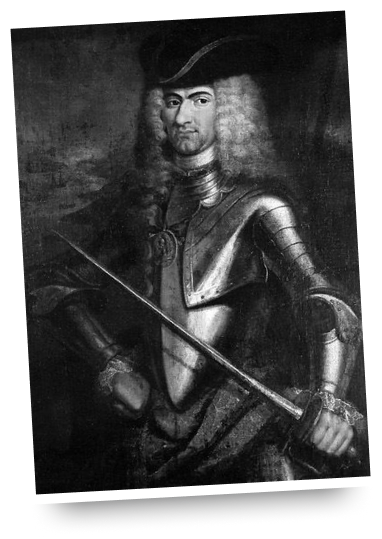
Danish/Norwegian vice admiral and naval hero.
Peter Jansen Wessel was born in Trondheim – which at that time was a part of Denmark – on October 28, 1690, and grew up in an affluent merchant home as the 14th child in a family of 18 siblings. It is said that as a child, he was completely uncontrollable and constantly involved in mischief and fights. In an attempt to discipline him, his father supposedly placed him in an apprenticeship with a strict tailor, but it had little effect.
In 1704, King Frederik IV traveled to Norway, and on July 26, he arrived in Trondheim with a large entourage. When he sailed back home, the young Wessel is said to have been on board as a stowaway. The story may well be true, but it cannot be verified. The person and the myth tend to blend together in the case of Tordenskjold, and since his talent for self-dramatization was well-developed, it is often difficult to determine what is what. Nevertheless, he did accompany the king to Copenhagen.
Peter Wessel's Rapid Rise
Peter Wessel had ambitions of joining the navy. Therefore, in 1706, he applied to the king to be accepted as a naval cadet. His application was rejected due to Tordenskjold's age (he was only 16 at the time), so he signed up to serve on the ship Christianus Quintus of the West Indies Company, which embarked on a voyage to Guinea and the West Indies from 1706 to 1708. Upon his return, he submitted a new application to the king and set off on another long journey. When he returned in 1710, he received the good news that he was now accepted as a naval cadet. In the meantime, war had broken out between Sweden and Denmark-Norway. Even though Wessel was only 20 years old, he was an experienced sailor when he entered the Naval Cadet Academy. In the spring of 1711, he served as the second-in-command on the frigate Postillon, and in July of the same year, he was promoted to second lieutenant. Shortly after, he took command of the sloop Ormen with five cannons, and in May 1712, he became the captain of the frigate Løvendals Galej, a ship with 20 cannons. Later that year, he was promoted to captain-lieutenant.
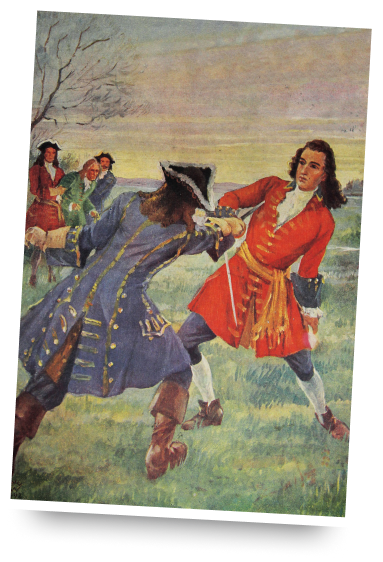
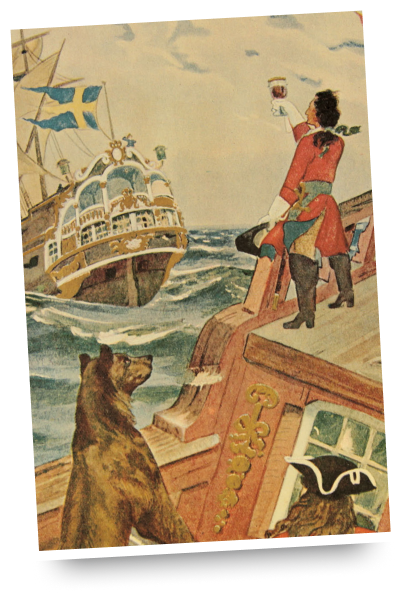
Courage and Humor
Peter Wessel was not the type to ask for permission first; he acted and then faced the consequences or the honor afterward. On August 12, 1713, he wrote a letter to the governor of Gothenburg, mocking the Swedes for allowing their privateers to attack merchant ships instead of fighting against real warships. To add insult to injury, he challenged the governor to send a ship after him since there was a reward offered. The governor did not share Wessel's sense of humor and complained about his audacity to the top general in Norway. The end of the story was that Peter Wessel received a reprimand from the king. On July 26-27, 1714, he engaged in a battle with a Swedish frigate. The battle abruptly stopped when Peter Wessel ran out of gunpowder and bullets, and the weather conditions made boarding impossible. He informed the enemy of his situation and suggested that they should go their separate ways. The two ships then sailed alongside each other, and the crews toasted to each other's health and cheered before going their separate ways as proposed. This incident led to Tordenskjold facing a court-martial, but he was acquitted. Shortly thereafter, he was promoted to captain.
Peter Wessel Becomes Tordenskjold
In 1715, Peter Wessel defeated a small Swedish fleet in the Kattegat and captured the ship Hvide Ørn. As a reward for his achievements, he was appointed the commander of the ship. During the battle at Rygen on August 8, 1715, he distinguished himself again, and in October of the same year, he engaged in a battle with a Swedish ship of the line and a frigate. Despite being heavily outnumbered in terms of cannons, he managed to drive the Swedish ships into retreat.
For this heroic act and many others, Peter Wessel was ennobled on February 24, 1716, under the name Tordenskjold, at the young age of 25.
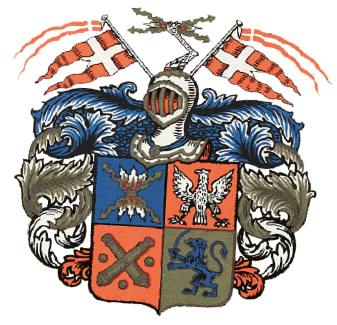
The Battle of Dynekilen
On July 4, 1716, the Swedish king, Karl XII, invaded Norway with a large army. Therefore, a Swedish supply fleet was on its way to the narrow Dynekilen fjord, between Strömstad and Iddefjord, to reach the besieged Danish fortress at Frederikssten. On July 8, 1716, early in the morning, Tordenskjold led his forces into the fjord and surprised the Swedish fleet. When the naval battle ended, Tordenskjold had destroyed the entire Swedish supply fleet of 25 ships.
He was promoted to commander and overall commander of the Kattegat squadron, and he and his ship commanders were awarded gold medals. On December 19, 1718, Tordenskjold heard rumors that Karl XII had died during the siege of Fredriksten. The rumor was confirmed, and he immediately traveled to Copenhagen, where he was the first to deliver the news to King Frederik IV. As a reward, he was instantly promoted to rear admiral.
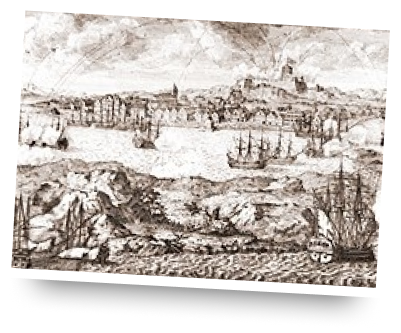
Tordenskjold's Soldiers
On July 23, 1719, Tordenskjold launched a devastating attack on the Swedish Gothenburg squadron, which was stationed in Marstrand. Afterward, he besieged the city and its fortress, Karlsten. Through negotiations, Tordenskjold persuaded the fortress's commander to surrender. This is where the phrase "Tordenskjold's soldiers" originated. What broke the Swedish commander was that Tordenskjold had a massive force in the city. But it was a bluff - he had his soldiers walk in circles, making it appear as if there were many more of them than there actually were. Therefore, we use the phrase today when the same few individuals are seen repeatedly in different contexts.
Unfortunately, this story cannot be confirmed in historical sources and is most likely a legend. However, considering Tordenskjold's other achievements, the story could very well be true. The king appointed Tordenskjold as vice admiral and gave him a portrait framed with diamonds. As a special gesture, Tordenskjold was allowed to wear the portrait on the blue ribbon of the Order of the Elephant.
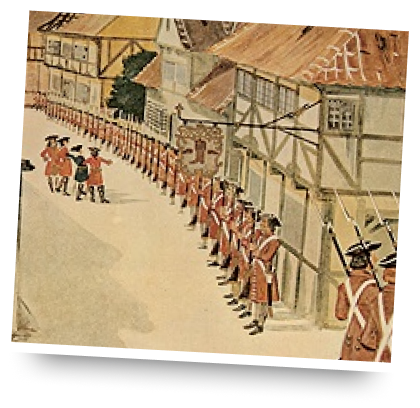
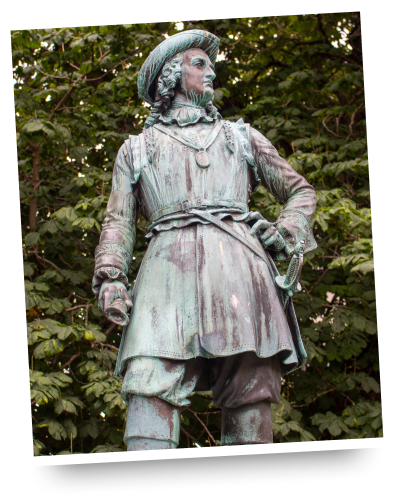
The Hero's Death
When peace was concluded in July 1720, Tordenskjold was allowed to travel abroad, and he immediately headed to Germany.
During his stay in Northern Germany, he heard that an acquaintance of his, Abraham Lehn, in Hamburg, had been cheated by gamblers. During a gathering on November 9, 1720, in Hanover, Tordenskjold entertained with the story.
A present colonel, Axel Jacob Stäel von Holstein, identified himself as one of the alleged gamblers, denied cheating, and demanded an apology. The dispute ended in a physical altercation, and the colonel demanded satisfaction in the form of a duel. The duel was fought with rapiers on November 12 and resulted in Tordenskjold being killed with a chest wound. He died at the age of 30 and was laid to rest in Holmens Church in Copenhagen. His sarcophagus and memorial plaque can still be seen there today.
150th Anniversary of Tordenskjold
A part of Danish coziness since 1865.
When we celebrated the 150th anniversary of the first Tordenskjold matchbox in 2015, we produced a comprehensive anniversary publication with lots of exciting stories about the old naval hero and the match production then and now.

